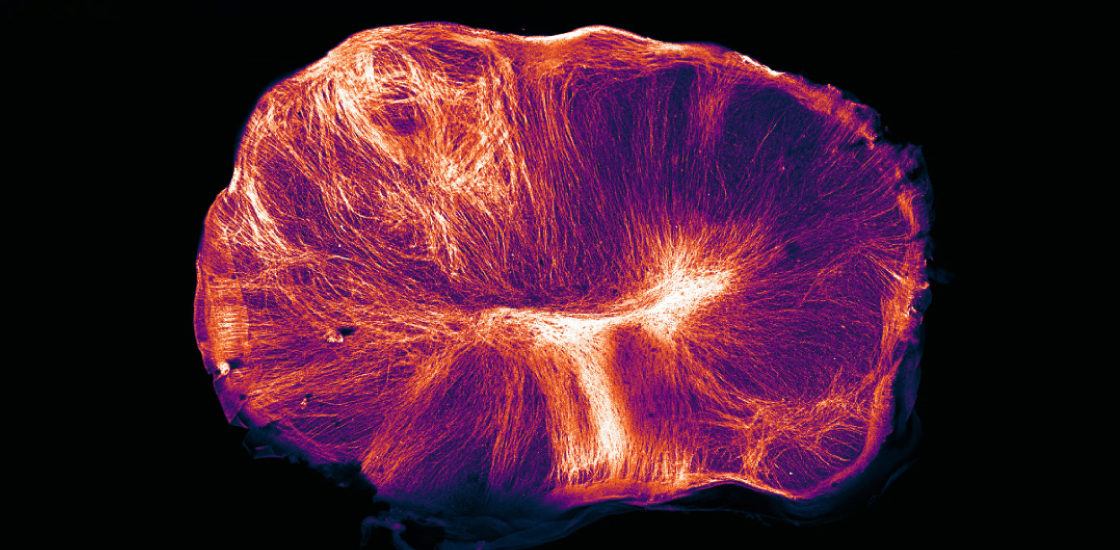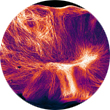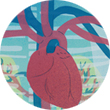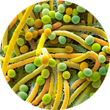
This year, researchers unearthed clues to the causes of autism — and how to treat it —from a variety of sources.
Advances in tiny models of the human brain bared new details about the biology of autism and provided possible platforms for testing therapies. Studies of heart rate put a spotlight on the autonomic nervous system as a potential wellspring of autism traits. And others forged a controversial connection between the gut microbiome and autism.
A few studies revealed important information about the time points at which different forms of autism are amenable to therapy. This year also saw scrutiny of tests used for screening and diagnosis, revealing gaps and limitations in the system for identifying autistic children.
Here are the year’s top five topics in autism research.
Brain makers
 Brain organoids start as mere clusters of stem cells, which then are coaxed to mature into brain cells. This year, the life span of these brains-in-a-dish grew to one year and then nearly two, enabling them to mature and mimic some aspects of the human brain. In the longest-lived organoids, researchers tracked changes in the expression of autism genes. Organoids derived from the skin cells of autistic people have a shortage of cells that suppress brain activity, they found. The finding supports the signaling imbalance theory of autism, which holds that the brains of autistic people are hyper-excitable.
Brain organoids start as mere clusters of stem cells, which then are coaxed to mature into brain cells. This year, the life span of these brains-in-a-dish grew to one year and then nearly two, enabling them to mature and mimic some aspects of the human brain. In the longest-lived organoids, researchers tracked changes in the expression of autism genes. Organoids derived from the skin cells of autistic people have a shortage of cells that suppress brain activity, they found. The finding supports the signaling imbalance theory of autism, which holds that the brains of autistic people are hyper-excitable.
This year, scientists also built tiny replicas of two brain areas bridged by a long fiber tract that might reveal how long-range connections are altered in the brains of people with autism.
Brain organoids spun from people with fragile X syndrome may help explain why some experimental fragile X drugs work in mice but not in people — and generate leads for effective therapies. Organoids could provide a platform for testing treatments, too, as researchers can now churn out hundreds of these brain-like blobs in parallel and make them uniform in shape and composition.
More distant applications include studies of consciousness and the effects of microgravity on the brain. In a fledgling sign of the former, brain organoids showed synchronized neuronal firing patterns, some aspects of which look like those in preterm infants.
Matters of the heart
 New evidence emerged tying autism to the workings of the autonomic nervous system, which controls breathing, heart rate and digestion. Differences in the system could explain a range of autism traits, including social difficulties and sensory sensitivity, as well as heart problems and digestive issues.
New evidence emerged tying autism to the workings of the autonomic nervous system, which controls breathing, heart rate and digestion. Differences in the system could explain a range of autism traits, including social difficulties and sensory sensitivity, as well as heart problems and digestive issues.
Many of these differences show up in the heart rate. Heart rate remains steady in autistic people as they breathe instead of the typical pattern of slowing slightly on exhale and quickening on inhale. This discrepancy arises after 18 months of age, around the same time that the condition’s core traits emerge. Children with Rett syndrome also have unusual heart-rate patterns.
These differences may persist beyond childhood. One study showed that autistic adults’ resting heart rates rarely vary; an even heart rate suggests a lack of flexibility in responding to environmental changes.
Gut reactions
 Autistic children are unusually prone to gastrointestinal problems. This association may not be a coincidence: Certain genetic mutations or alterations in the microbiome — the mix of microbes in the intestines — may contribute to both autism and gut problems.
Autistic children are unusually prone to gastrointestinal problems. This association may not be a coincidence: Certain genetic mutations or alterations in the microbiome — the mix of microbes in the intestines — may contribute to both autism and gut problems.
Four mouse studies in 2019 offered up fresh evidence — some of it controversial — to support this idea. In one study, researchers replaced the gut microbes in mice with those from autistic boys. The mice have repetitive behaviors, make fewer vocalizations and spend less time socializing than controls do, providing the first evidence that gut microbes contribute to autism traits.
But within hours of the study’s publication, several experts criticized its small sample size and highly variable results. Others found a possible statistical error.
In an unrelated study, researchers revealed that oral doses of Lactobacillus reuteri, a type of gut bacteria found in yogurt and breast milk, boost social behavior in three mouse models of autism. And two other sets of findings suggested that mutations in NLGN3, a high-confidence autism gene, alter gut function. One of them showed that a mutation in this gene disrupts the mice’s microbiome.
Opportune moments
 Drugs for autism may be most effective when given during a ‘critical period’ of brain development. Researchers delineated the windows for treating autism traits in mouse and rat models of the condition.
Drugs for autism may be most effective when given during a ‘critical period’ of brain development. Researchers delineated the windows for treating autism traits in mouse and rat models of the condition.
One study revealed that by the time mice reach adulthood, they have lost their ability to learn from social experiences. Giving adult mice an injection of 3,4-methylenedioxymethamphetamine (MDMA), the active ingredient in ecstasy, reopens the critical window for learning.
In another study, researchers fed the cholesterol drug lovastatin to rat models of fragile X syndrome. The treatment, if given at 4 weeks of age (the rat equivalent of childhood), prevents cognitive problems, the researchers found.
The timing of treatments may be more important for some forms of autism than for others. A study of mice missing UBE3A, the gene mutated in Angelman syndrome, showed that the earlier in life the gene is restored, the more the mice improve.
By contrast, a mutation in the autism gene SCN2A has many of the same effects on neurons when introduced into adolescent mice as it does when it is present from conception. And unpublished results show that correcting an SCN2A mutation in adulthood reverses these problems.
Errors in detection
 A series of studies this year called into question the accuracy of early screening and revealed racial disparities in autism diagnoses.
A series of studies this year called into question the accuracy of early screening and revealed racial disparities in autism diagnoses.
Some studies cast doubt on the utility of a widely used screening tool, the Modified Checklist for Autism in Toddlers: The test identifies less than 40 percent of autistic children, and 85 percent of those it does flag do not have autism.
Of the toddlers the test flags, most do not receive follow-up evaluations. And for those who are seen again, a definitive diagnosis may not be possible right away. Some children who screen negative at age 3 meet the diagnostic criteria for autism only after age 5.
Not all children have equal access to autism evaluations, with black and Hispanic children at a disadvantage in several U.S. states. In New Jersey, black children are half as likely as white children to receive an autism assessment by age 3.
About 9 percent of autistic children may outgrow an autism diagnosis but still have other conditions that require support, highlighting the need for continued observation to adapt to their evolving needs.
Recommended reading

Expediting clinical trials for profound autism: Q&A with Matthew State

Too much or too little brain synchrony may underlie autism subtypes
Explore more from The Transmitter

Mitochondrial ‘landscape’ shifts across human brain

